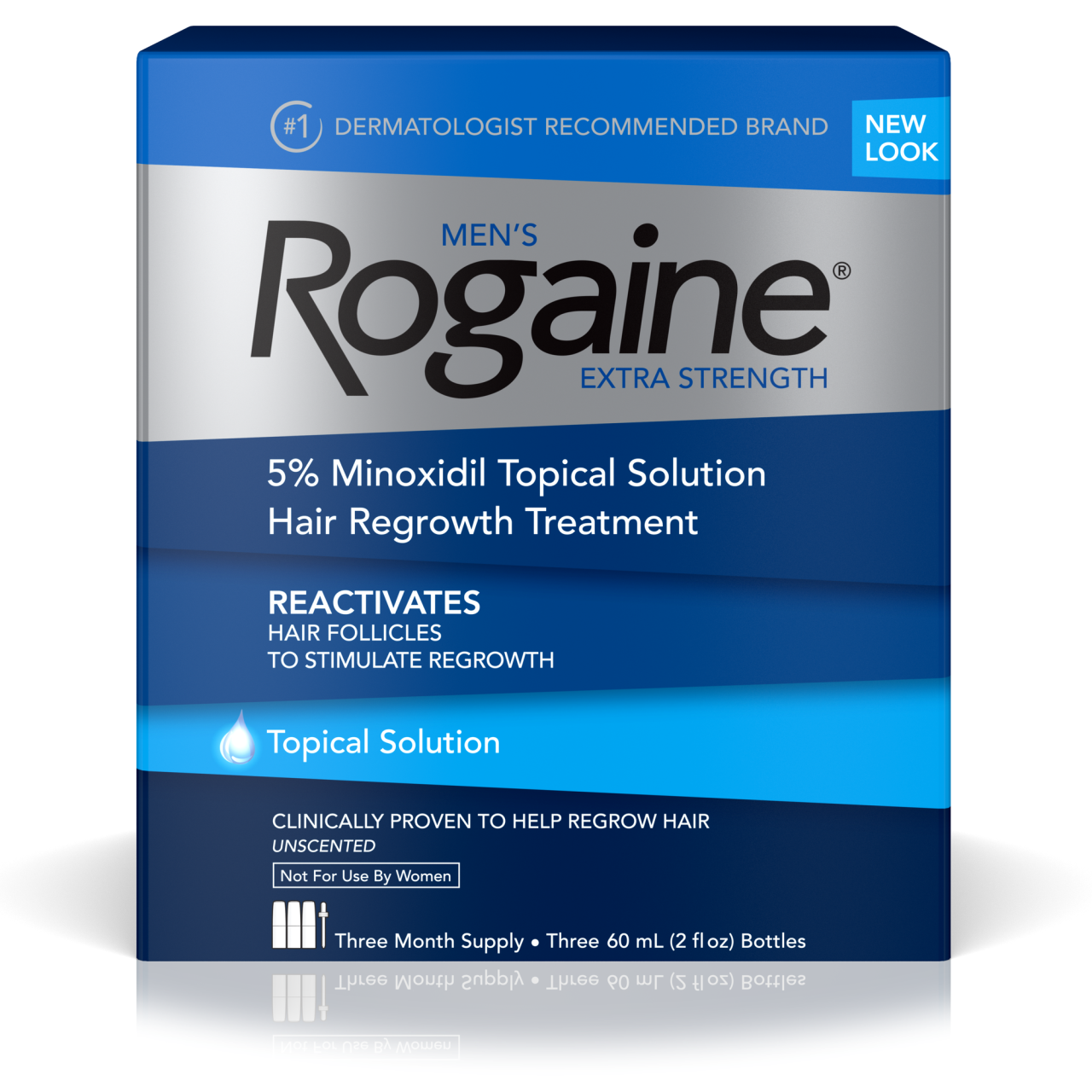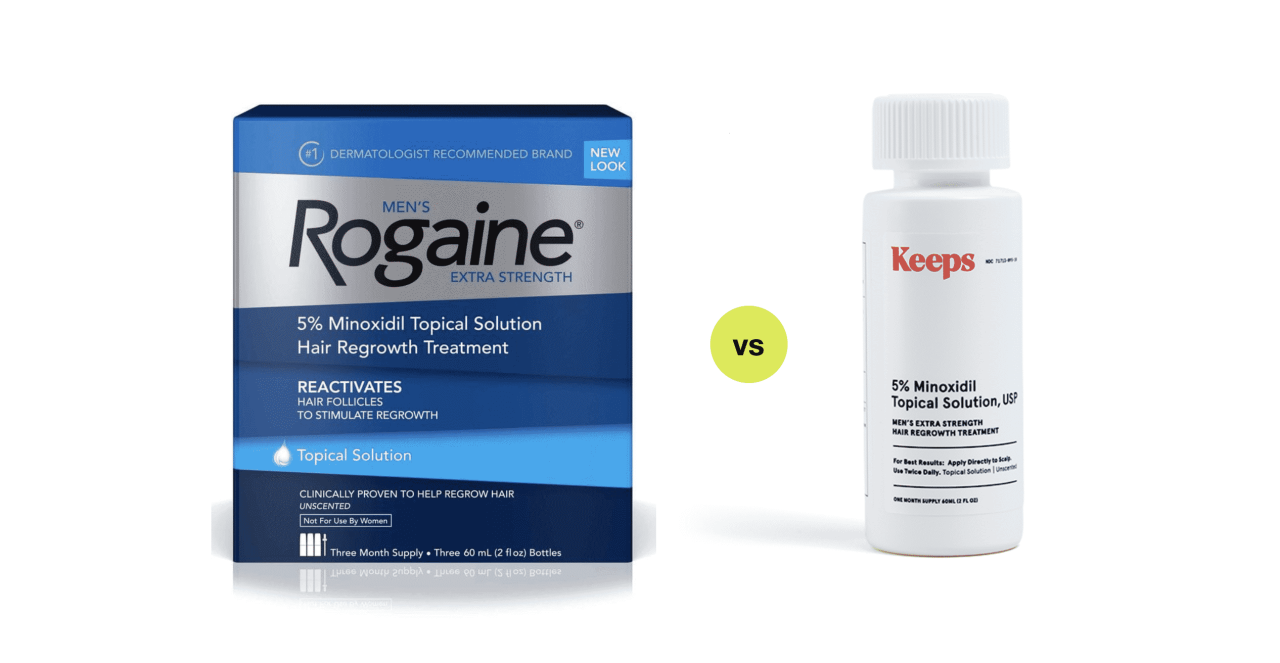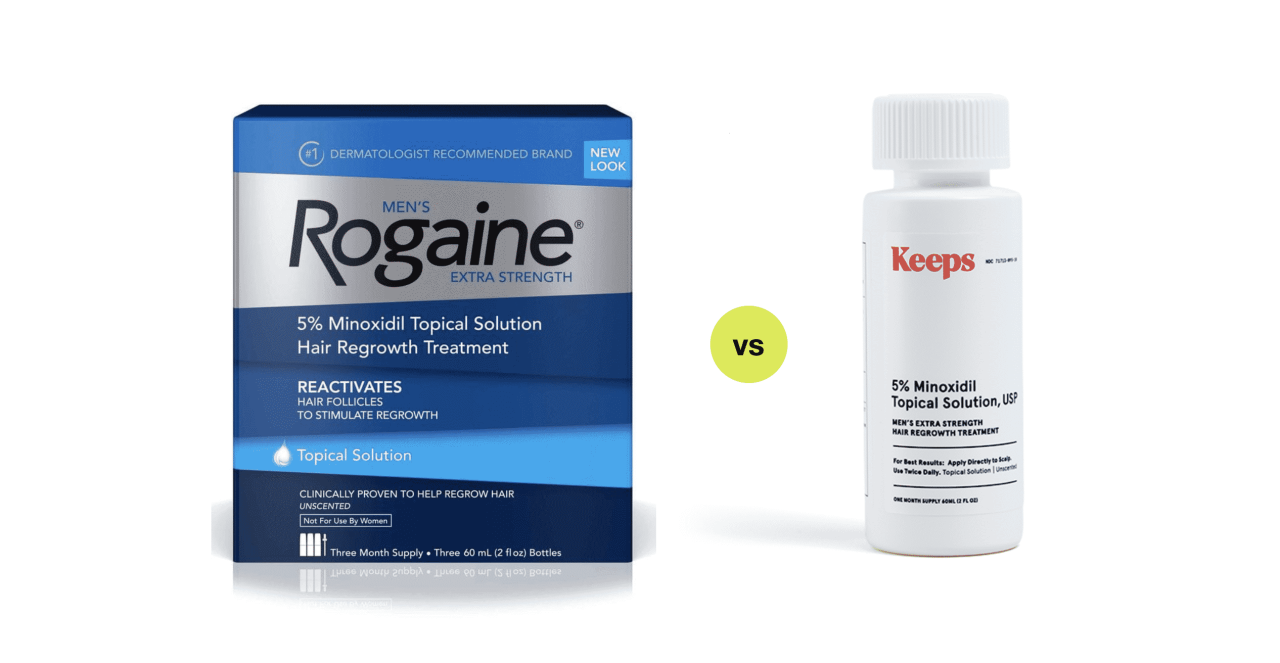Hair loss treatment Rogaine: Navigating the world of hair regrowth. Androgenetic alopecia, often called male pattern baldness, and female pattern hair loss can be frustrating. This guide dives into how Rogaine (minoxidil) works, exploring different formulations, application methods, and expected results. We’ll also cover potential side effects, comparisons to other treatments, and real-life experiences.
This in-depth look at Rogaine covers everything from the science behind its effectiveness to the practicalities of use. We’ll explore the various strengths and concentrations, examining how they compare and what to expect. Plus, we’ll tackle the crucial aspect of potential side effects and precautions.
Introduction to Hair Loss Treatment (Rogaine): Hair Loss Treatment Rogaine
Hair loss, a common concern for both men and women, can significantly impact self-esteem and confidence. Understanding the underlying causes and available treatments is crucial for effective management. Androgenetic alopecia, commonly known as male pattern baldness, and female pattern hair loss are the most prevalent types, characterized by progressive hair thinning and eventual baldness.Rogaine, containing the active ingredient minoxidil, is a popular topical treatment option for both men and women experiencing hair loss.
Its mechanism of action involves stimulating hair follicles to promote new hair growth and increase the growth phase of existing hairs. This ultimately helps to slow or reverse hair loss, and in some cases, can lead to noticeable hair regrowth.
Understanding Androgenetic Alopecia
Androgenetic alopecia, or male pattern baldness, is a hereditary condition predominantly influenced by genetics and hormonal factors. It typically manifests with a receding hairline and thinning of the crown area. Female pattern hair loss, while less commonly associated with complete baldness, often presents as diffuse thinning across the scalp, impacting the overall volume of hair. The underlying causes for both types are complex, involving a combination of genetic predisposition and hormonal imbalances.
How Rogaine Works
Rogaine’s active ingredient, minoxidil, is a vasodilator. By increasing blood flow to the hair follicles, it promotes the growth of new hair and helps existing hairs remain in the growth phase longer. This improved blood supply provides essential nutrients to the follicles, facilitating hair growth and reducing the progression of hair loss.
Rogaine Formulations
Rogaine comes in different formulations to cater to various needs and preferences. The most common are liquid solutions and foam. The choice between these formulations often depends on individual preference and application comfort.
Application Methods and Usage Frequency
Consistent application is crucial for Rogaine to be effective. The solution or foam should be applied directly to the scalp, focusing on the affected areas. It’s essential to follow the prescribed application method and usage frequency for optimal results. Regular and consistent use is key. For best results, follow the instructions on the product packaging carefully.
Rogaine Strengths and Concentrations
The strength of Rogaine is determined by the concentration of minoxidil. Different concentrations are available to suit individual needs and responses.
| Strength | Concentration | Application |
|---|---|---|
| 2% | 2% minoxidil | Topical solution |
| 5% | 5% minoxidil | Topical solution |
| 2% | 2% minoxidil | Topical foam |
Effectiveness and Efficacy
Rogaine, or minoxidil, is a topical solution commonly used for treating hair loss. Understanding its effectiveness and the timeframe for seeing results is crucial for anyone considering this treatment option. The results vary greatly depending on individual factors, so a thorough understanding of the potential outcomes is essential.Typical results and timeframe for seeing hair growth with Rogaine involve a gradual process, not immediate results.
Most people experience noticeable improvement after several months of consistent application. A few might see subtle changes in hair growth within a couple of weeks, but significant, noticeable growth typically takes three to six months. This gradual nature is important to remember and not be discouraged by early, minimal results.
Varying Results Between Individuals
Individual responses to Rogaine differ significantly. Factors like age, genetics, the severity and type of hair loss, and even the individual’s overall health play a critical role in determining the efficacy of the treatment. Someone with mild hair thinning might see more rapid and significant growth compared to someone with more extensive hair loss. The rate of hair regrowth is highly variable.
Consistent use of the medication is essential for any positive outcomes.
Scientific Evidence Supporting Rogaine’s Effectiveness
Numerous clinical studies support Rogaine’s effectiveness in promoting hair growth. These studies often involve controlled trials where participants are randomly assigned to either a treatment group (using Rogaine) or a control group (using a placebo). The studies measure hair growth over time, comparing the results in both groups. Results consistently show a statistically significant increase in hair growth in the treatment group compared to the placebo group.
This evidence, along with extensive use and patient reports, underscores Rogaine’s potential.
Comparison to Other Hair Loss Treatments
Comparing Rogaine’s efficacy to other hair loss treatments is complex. Treatments like finasteride (Propecia) often target different mechanisms and may yield varying results depending on the individual’s specific hair loss pattern and overall health. While Rogaine is a popular topical treatment, finasteride is a different class of drug, and the two should not be considered equivalent. The choice of treatment should be guided by a consultation with a healthcare professional to assess the most suitable approach.
Rogaine, a popular hair loss treatment, has been a lifesaver for many. Thinking about all the fun I’ll have at the new Star Wars land at Niles Disney, as reported in this article , might distract me from the constant worry of thinning hair. Hopefully, the exciting changes will help me focus on more positive things, like enjoying the new rides and attractions, rather than obsessing over my hair loss treatment regimen.
Summary of Studies on Rogaine’s Efficacy
| Study | Sample Size | Treatment | Results |
|---|---|---|---|
| Finasteride vs. Minoxidil in Male Pattern Hair Loss | Large | Finasteride and Minoxidil | Studies consistently show both treatments lead to hair regrowth, but the effectiveness varies depending on the individual and the type of hair loss. Further research is required for more in-depth analysis. |
| Minoxidil for Androgenetic Alopecia: A Meta-Analysis | Moderate | Minoxidil | This meta-analysis showed a statistically significant improvement in hair growth compared to placebo. Improvements were more significant in those with mild to moderate hair loss. |
| Long-term Efficacy of Topical Minoxidil | Large | Minoxidil | Long-term use of minoxidil demonstrates sustained hair growth in a considerable percentage of participants. |
Note: This table provides a simplified overview. Actual studies have more complex data points and detailed descriptions. Consulting the original research is crucial for a complete understanding.
Potential Side Effects and Precautions
Rogaine, while a popular and often effective treatment for hair loss, can sometimes come with unwanted side effects. Understanding these potential issues and taking the necessary precautions can help you make informed decisions about your hair loss journey. It’s crucial to remember that individual responses to treatments vary, and what one person experiences might differ from another.A proactive approach to managing potential side effects is key.
This includes being aware of the common and less common side effects, knowing how to manage them, and recognizing when to seek professional medical advice. Consulting your healthcare provider before starting any new treatment is always recommended.
Common Side Effects
A significant number of users report experiencing mild to moderate skin reactions. These reactions typically manifest as scalp irritation, characterized by redness and itching. Scalp dryness, a common complaint, can be another consequence of Rogaine use. These reactions are usually temporary and resolve with continued use and appropriate management strategies.
Less Common, but Serious Side Effects
While less frequent, some users may experience more severe side effects. These include, but are not limited to, hair follicle inflammation, leading to potential discomfort and redness at the hair root. In rare cases, allergic reactions or other more severe dermatological conditions have been reported. If you experience any unusual or persistent symptoms, discontinue use and consult your doctor immediately.
Precautions Before Use
Before starting Rogaine, it’s essential to consult with a healthcare professional. They can assess your individual health status, evaluate your hair loss concerns, and determine if Rogaine is an appropriate treatment option for you. They can also provide guidance on potential risks and help you manage any potential side effects.
Managing Side Effects, Hair loss treatment rogaine
If you do experience side effects, there are steps you can take to manage them. Firstly, discontinue use and consult with your healthcare provider. Secondly, follow any specific instructions provided by your doctor. Thirdly, consider using a gentle, fragrance-free cleanser to clean your scalp. Lastly, if the irritation persists, your doctor may recommend alternative treatments or adjustments to your Rogaine application.
Potential Side Effect Table
| Side Effect | Description | Frequency |
|---|---|---|
| Scalp Irritation | Redness, itching, burning sensation, or discomfort on the scalp. | Common |
| Hair Follicle Inflammation | Inflammation or redness at the base of the hair follicle, possibly leading to pain or tenderness. | Possible |
| Allergic Reactions | Skin rash, hives, swelling, or difficulty breathing. | Uncommon |
| Other dermatological conditions | Rare, but potentially serious skin conditions. | Rare |
Rogaine and Other Treatments

Rogaine, or minoxidil, is a popular topical treatment for hair loss, but it’s not the only option. Understanding how Rogaine interacts with other medications and treatments, as well as evaluating alternative approaches, is crucial for informed decision-making. Many people find that combining therapies can be beneficial, but it’s important to discuss potential benefits and drawbacks with a healthcare professional before making any changes to your treatment plan.
Potential Interactions with Other Medications
Several medications can interact with Rogaine, potentially affecting its effectiveness or increasing the risk of side effects. For instance, some medications can alter blood pressure, which can be affected by minoxidil. Carefully review all medications you’re taking with your doctor to identify potential interactions. Always disclose all medications, supplements, and herbal remedies to your doctor or dermatologist to ensure a safe and effective treatment plan.
Comparison to Other Topical Hair Loss Treatments
Several topical hair loss treatments are available, each with its own mechanism of action and potential benefits. Some, like ketoconazole shampoos, target fungal infections that may contribute to hair loss, while others, such as topical finasteride (a medication usually taken orally), address the underlying hormonal imbalances involved. A dermatologist can advise on the most appropriate topical treatment based on individual circumstances.
Speaking of serious situations, hair loss treatment rogaine can be a real lifesaver for some. While the recent tragic midair collision, killing 67 people in the deadliest US air disaster in almost a quarter century, highlighting the fragility of life , it’s important to focus on the everyday struggles too. Ultimately, finding the right hair loss treatment is crucial for maintaining self-confidence and overall well-being.
Different topical treatments may be more effective for specific types of hair loss or have different side effect profiles.
Combining Rogaine with Other Treatments
Combining Rogaine with other treatments can potentially amplify results, but it’s crucial to approach such combinations cautiously. The synergistic effects may result in a more significant improvement in hair growth, but potential side effects can also be compounded. For example, using Rogaine with a topical antifungal shampoo may be beneficial for individuals experiencing both hair loss and a fungal scalp condition.
However, it’s essential to discuss the potential benefits and drawbacks of any combination therapy with a healthcare professional.
Comparison Table: Rogaine vs. Finasteride (Propecia)
| Treatment | Mechanism of Action | Advantages | Disadvantages |
|---|---|---|---|
| Rogaine (Minoxidil) | Dilates blood vessels in the scalp, potentially increasing blood flow and hair follicle activity. | Topical application, often well-tolerated, and generally safe for most people. | Can cause skin irritation, scalp dryness, and, in rare cases, significant blood pressure changes. Not effective for everyone, and results may vary. |
| Finasteride (Propecia) | Inhibits the production of dihydrotestosterone (DHT), a hormone that contributes to hair follicle shrinkage. | Often more effective than minoxidil for some individuals, and may lead to more significant hair growth. | Oral medication, potential for side effects such as sexual dysfunction, and not suitable for all individuals, including women. Requires long-term use to maintain results. |
Patient Experiences and Testimonials
Real-life experiences with Rogaine offer valuable insights into its effectiveness and potential side effects. Understanding the diverse responses to this treatment is crucial for informed decision-making. This section delves into the varying patient journeys, highlighting both positive and negative feedback.
Positive Experiences with Rogaine
Patient accounts often describe noticeable improvements in hair growth after using Rogaine. These improvements can be subtle or significant, depending on individual factors. Many users report noticing changes within several months of consistent use.
“I’ve been using Rogaine for six months, and I’m seeing a noticeable difference in my hair growth.”
This positive feedback emphasizes the potential of Rogaine to stimulate hair follicle activity, leading to visible improvements in hair density and thickness for some individuals. However, it’s essential to remember that individual responses vary.
Negative Experiences and Side Effects
While Rogaine can be effective for many, some users experience undesirable side effects. Scalp irritation is a common complaint, ranging from mild redness and itching to more severe reactions. Other reported side effects include dryness, burning, and even allergic reactions.
“I experienced significant scalp irritation after starting Rogaine.”
I’ve been researching hair loss treatment options lately, and Rogaine seems promising. With the recent news that Yosemite National Park has reopened some campgrounds, yosemite reopens some campgrounds , it got me thinking about the great outdoors and how a healthy lifestyle might play a role in overall well-being, including hair health. Hopefully, this newfound focus on self-care will help me tackle my hair loss with Rogaine.
It’s crucial for users to carefully monitor their reaction to Rogaine and discontinue use if significant discomfort arises. Consulting a healthcare professional is recommended to address any concerns or complications.
Factors Influencing Patient Experiences
Several factors can influence how a person responds to Rogaine. These include the severity of hair loss, the individual’s overall health, the specific formulation of Rogaine used, and adherence to the prescribed regimen. Consistency is key.
Important Considerations
It’s vital to remember that testimonials reflect individual experiences and should not be interpreted as guarantees of success. Results vary significantly, and the effectiveness of Rogaine depends on individual factors. Always consult a healthcare professional before starting any hair loss treatment.
Important Considerations and Recommendations

Rogaine, while a popular hair loss treatment, isn’t a one-size-fits-all solution. Understanding the nuances of its use, potential limitations, and proper application is crucial for achieving the best possible results. This section delves into key considerations for effective and safe use of Rogaine.
Importance of Professional Consultation
Consulting a healthcare professional before starting any hair loss treatment, including Rogaine, is paramount. A doctor can assess the underlying cause of hair loss, rule out any medical conditions, and determine if Rogaine is appropriate for your specific situation. They can also discuss potential interactions with other medications you may be taking. This personalized approach ensures that you’re using the most suitable treatment and minimizing any risks.
Long-Term Rogaine Use
Rogaine can be used long-term, but it’s not a permanent solution. The effectiveness of Rogaine depends on consistent application and can vary among individuals. Sustained use may be necessary to maintain hair growth or prevent further hair loss. However, long-term use should be monitored by a healthcare professional to evaluate continued effectiveness and potential side effects.
Choosing the Right Rogaine Product
Several Rogaine formulations are available, each designed for specific hair loss patterns and needs. The choice of product depends on factors such as the location and extent of hair loss. A healthcare professional can guide you in selecting the appropriate concentration and product type, considering your individual needs and scalp characteristics. Different concentrations of minoxidil (the active ingredient in Rogaine) are available, with 2% and 5% being common.
Managing Hair Growth Expectations
It’s essential to manage expectations regarding hair growth with Rogaine. Results are not immediate and can vary significantly between individuals. Hair growth may be gradual, and it’s important to be patient and consistent with the treatment regimen. Significant improvements often take several months of continuous use. Remember that individual responses differ, and results may not always meet initial expectations.
Illustrative Example of Healthy Scalp
Imagine two identical scalp areas. One shows a healthy scalp with a full head of hair, demonstrating the natural thickness and distribution of hair follicles. The other scalp area exhibits thinning hair and visible scalp, illustrating the potential impact of hair loss. This visual difference highlights the potential impact of hair loss treatments, including Rogaine, and underscores the need for careful consideration and professional guidance in addressing such concerns.
Ending Remarks
In conclusion, hair loss treatment with Rogaine offers a potential path to regrowth, but individual results vary. Understanding how Rogaine works, its different formulations, potential side effects, and comparison to other treatments is key. Ultimately, consulting a healthcare professional is crucial before starting any hair loss treatment. This comprehensive guide aims to equip you with the knowledge to make informed decisions about your hair health journey.

